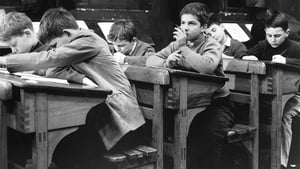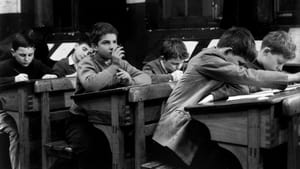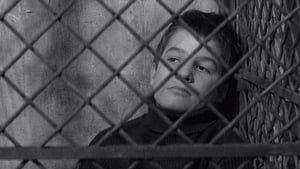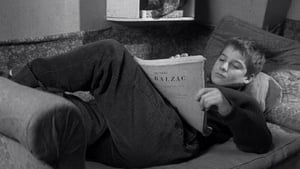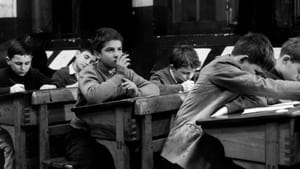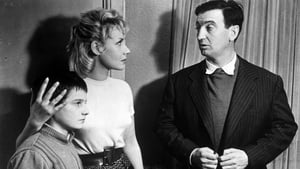Contact: [email protected]
Video Sources 0 Views

The 400 Blows Colorized 1959: Best Stunning Transformation of Old Cinema
Synopsis
[ez-toc]




Introduction
In the ever-evolving landscape of cinema, the clash between preserving the authenticity of old films and embracing modernization has sparked numerous debates. One such intriguing transformation is witnessed in The 400 Blows Colorized 1959. This article delves into the remarkable journey of this classic, exploring the impact of colorization on the cinematic experience and navigating the controversies surrounding this practice. As we embark on this cinematic journey, it’s essential to understand the significance of colorizing old movies, particularly a masterpiece like The 400 Blows.
Read Media File Transfer Agreement: Terms and Conditions
Read FAQ
The Evolution of The 400 Blows Colorized
At the helm of this transformative venture is François Truffaut, a pioneer of the French New Wave movement. The 1959 black-and-white original, The 400 Blows Colorized, marked Truffaut’s directorial debut and became a cornerstone in his illustrious career. Truffaut’s unique style, characterized by personal storytelling and innovative techniques, found its roots in this exploration of the life of a young boy named Antoine Doinel.
The French New Wave, a cinematic revolution in the late 1950s and early 1960s, embraced unconventional narratives and challenged traditional filmmaking norms. The 400 Blows Colorized perfectly encapsulates the movement’s principles, making it a landmark film in the history of cinema.
Recognition and Awards at Cannes Film Festival
Premiering at the prestigious Cannes Film Festival, The 400 Blows Colorized received both critical acclaim and audience adoration. The raw and honest portrayal of Antoine Doinel’s troubled adolescence resonated with viewers and critics alike. The film’s success at Cannes catapulted it onto the international stage, earning Truffaut the Best Director award and laying the foundation for the French New Wave’s global recognition.
The 400 Blows’ triumph at Cannes solidified its place in the pantheon of cinema, setting the stage for the colorized adaptation to breathe new life into its narrative.
Analyzing the Narrative and Themes of The 400 Blows Colorized
Jean-Pierre Léaud’s portrayal of Antoine Doinel is nothing short of a revelation. The film navigates the challenges of adolescence, portraying the struggles of a misunderstood youth in 1950s Paris. Doinel’s rebellious acts, interactions with his schoolteacher, and the overarching theme of societal critique create a poignant narrative that transcends time.
The colorization of The 400 Blows Colorized promises to enhance the emotional impact of Doinel’s journey, offering a fresh perspective on the character’s struggles and the vibrant atmosphere of post-war Paris.
The Cinematic Language of Color: Understanding Colorization Techniques
Color, a powerful storytelling tool, plays a pivotal role in the visual language of cinema. The colorization process involves the addition of color to black-and-white films, offering a renewed viewing experience. Techniques such as digital color grading and meticulous frame-by-frame color restoration breathe life into the once-monochromatic frames, providing a rich and immersive visual feast.
The preservation of old movies through colorization serves a dual purpose – it not only introduces these classics to a new generation but also revitalizes the cinematic experience for seasoned viewers.
Controversies Surrounding Colorization in Cinema
While colorization brings a new dimension to classic films, it doesn’t come without its fair share of controversies. Purists argue that altering the original black-and-white aesthetic compromises the artistic integrity of the filmmaker’s vision. The debate between preserving films in their authentic form versus embracing colorization as a legitimate artistic choice remains a hot topic in cinematic circles.
Exploring both sides of the argument is crucial in understanding the complex relationship between art, preservation, and innovation in the realm of cinema.
The Colorful Revival: Experiencing The 400 Blows in Color
The 400 Blows Colorized, set against the backdrop of a tumultuous Paris, captures the essence of the 1950s. The colorization of this masterpiece aims to breathe life into the city’s streets, Antoine’s rebellious behavior, and the nuanced relationships depicted in the film. The addition of color promises to elevate the emotional resonance of key scenes, allowing audiences to immerse themselves in the vibrant tapestry of Doinel’s world.
The choice of color for specific scenes, meticulously curated to evoke the era’s spirit, promises a visual spectacle that complements the narrative without overshadowing its essence.
Extending the Legacy: The Influence of The 400 Blows Colorized 1959
The impact of The 400 Blows extends beyond its original release, transcending the boundaries of time and language. The colorized version introduces the film to a new generation, offering a fresh perspective on its timeless themes. The influence of this cinematic masterpiece on subsequent generations of filmmakers is undeniable, with its colorized iteration contributing to the ongoing dialogue in contemporary cinema.
The themes of youth alienation and societal critique explored in The 400 Blows remain relevant, showcasing the enduring power of cinema to mirror and critique society.
Preserving Artistic Integrity: Responsible Approaches to Film Colorization
As we navigate the world of film colorization, it becomes imperative to address concerns about preserving the artistic intent of the original filmmakers. Respecting the nuances of the black-and-white aesthetic while incorporating color requires a delicate balance. High-quality restoration techniques, coupled with a commitment to preserving the filmmaker’s vision, offer an alternative path to introducing classic films to modern audiences without compromising their integrity.
Striking this balance ensures that the essence of the original work is retained, allowing viewers to appreciate the film in a new light without losing sight of its historical and artistic significance.
The 400 Blows Colorized 1959: A Controversial Masterpiece
In the grand tapestry of French cinema, The 400 Blows stands as a testament to the artistry of François Truffaut and the innovative spirit of the French New Wave. The colorized adaptation adds a layer of controversy to its legacy, sparking conversations about the role of colorization in preserving and revitalizing old films.
Analyzing The 400 Blows as a controversial masterpiece requires us to appreciate its artistic achievements in both the original and colorized versions. While the debates surrounding colorization persist, it’s essential to acknowledge the film’s contribution to the broader cinematic landscape and its enduring impact on the appreciation of French cinema.
Personal reflections on the impact of colorization may vary, with some viewers embracing the vibrant hues that breathe life into the film, while others may find solace in the timeless beauty of the original black-and-white aesthetic. Regardless of personal preferences, The 400 Blows Colorized 1959 prompts us to engage in a nuanced exploration of cinema’s evolving nature.
Where to Watch The 400 Blows Colorized 1959
For those eager to embark on this colorful journey through cinematic history, The 400 Blows Colorized 1959 is available on various streaming platforms. Embrace the opportunity to witness the transformation of a classic, allowing the colors to transport you to the vibrant streets of 1950s Paris.
Whether you choose to experience The 400 Blows in its original form or explore the colorized adaptation, the film’s impact remains undeniably profound.
Embrace the Colors, Honor the Past
As we conclude our exploration of The 400 Blows Colorized 1959, it’s crucial to embrace the evolving nature of cinema while honoring the past. The clash between tradition and innovation, exemplified by the colorization of old movies, adds layers of complexity to our cinematic experiences.
Let us appreciate the craftsmanship of filmmakers like François Truffaut, whose contributions to the art form continue to shape our understanding of storytelling. As we embrace the colors that bring new life to classics, let us also honor the past by preserving the artistic integrity that defines the rich tapestry of cinematic history.
In the kaleidoscope of cinema, where colors merge with shadows, may our collective appreciation for the art form serve as a bridge between generations, allowing timeless masterpieces like The 400 Blows to endure, both in their original glory and their vibrant, controversial adaptations.
